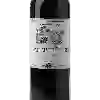
Maison Mallard-GaulinChancoulay Beaujolais
In the mouth this red wine is a with a nice freshness.
This wine generally goes well with pork, poultry or veal.
Taste structure of the Chancoulay Beaujolais from the Maison Mallard-Gaulin
Light | Bold | |
Smooth | Tannic | |
Dry | Sweet | |
Soft | Acidic |
In the mouth the Chancoulay Beaujolais of Maison Mallard-Gaulin in the region of Beaujolais is a with a nice freshness.
Food and wine pairings with Chancoulay Beaujolais
Pairings that work perfectly with Chancoulay Beaujolais
Original food and wine pairings with Chancoulay Beaujolais
The Chancoulay Beaujolais of Maison Mallard-Gaulin matches generally quite well with dishes of pasta, veal or pork such as recipes of spaghetti with squid ink (italy), veal paupiettes with forestry sauce or gloom and doom.
Details and technical informations about Maison Mallard-Gaulin's Chancoulay Beaujolais.
Discover the grape variety: Précoce Bousquet
The Précoce Bousquet blanc is a grape variety that originated in France (Tarn). It produces a variety of grape specially used for wine making. It is rare to find this grape to eat on our tables. The Precoce Bousquet blanc can be found in several vineyards: South-West, Cognac, Bordeaux, Provence & Corsica, Rhone Valley, Loire Valley, Savoie & Bugey, Beaujolais.
Informations about the Maison Mallard-Gaulin
The Maison Mallard-Gaulin is one of of the world's great estates. It offers 39 wines for sale in the of Beaujolais to come and discover on site or to buy online.
The wine region of Beaujolais
Beaujolais is an important wine region in eastern France, famous for its vibrant, Fruity red wines made from Gamay. It is located immediately South of Burgundy, of which it is sometimes considered a Part, although it is in the administrative region of Rhône. The extensive plantings of Gamay in this region make Beaujolais one of the few regions in the world that is so concentrated on a single Grape variety. Pinot Noir is used in small quantities in red and rosé wines, but in the name of regional identity, it is being phased out and will only be allowed until the 2015 harvest.
The word of the wine: Juice
The juice of wine grapes (intended for wine making) is colourless. It is the anthocyanins contained in the grape skin that colour the juice during maceration.














